Your Guide to Shopping at the Farmers’ Market and Keeping Your Purchases Fresh at Home
The summer is prime time for shopping at the farmers market, yet, making those finds last can be a challenge
/https://tf-cmsv2-smithsonianmag-media.s3.amazonaws.com/filer/af/08/af0898ee-cd3b-4b74-86a3-562c6d059721/42-54402658.jpg)
The summer is for cooling off at the beach, sipping piña coladas and for many, going to the farmers market. Over the past six years, the number of farmers markets has grown over 76 percent with a continual rise in interest for locally grown food. And, the summer season is the busiest time at the farmers markets as there is an overwhelmingly delicious array of colorful fruits and vegetables for sale.
Yet, as happy as it may be picking out all of that produce, come Friday the basil that was supposed to go in that night's dinner may be all black and the zucchini? It's covered with brown spots. But, there are ways to avoid these common farmers market conundrums. First, a couple of general tips that will make your purchases hit the dinner table instead of the trash can:
- Go home right after the market. Don’t leave the produce in the car to run other errands or baking in the sun while getting breakfast. Head home and store them properly, as soon as you arrive.
- Keep the produce out of sunlight once home.
- Do not store fruits and vegetables together. Fruits give off high levels of ethylene gas, which ripens the fruits, causing them to change color, become softer, and sweeter. But it can quickly spoil surrounding vegetables.
There are so many varieties of fruits and vegetables at the summer market, but here are a few ways to help keep the summer's most popular produce last.
Peaches

It is best to pick out peaches that are on the firmer side unless they are to be eaten that day (and if that's the case, leave them in a bowl or basket on the kitchen counter away from sunlight.
To lengthen the life of the fruits, store them in the refrigerator in a low moisture drawer, but only with other fruits. The refrigerator does not make the fruit more or less ripe but simply stops the process in time. Take the peaches out the night before eating.
If to quicken the softening process, store them in a paper bag in a cool dark place, thereby trapping the ethylene gas. The paper bag trick is good for other fruits as well such as avocados and plantains.
Tomatoes
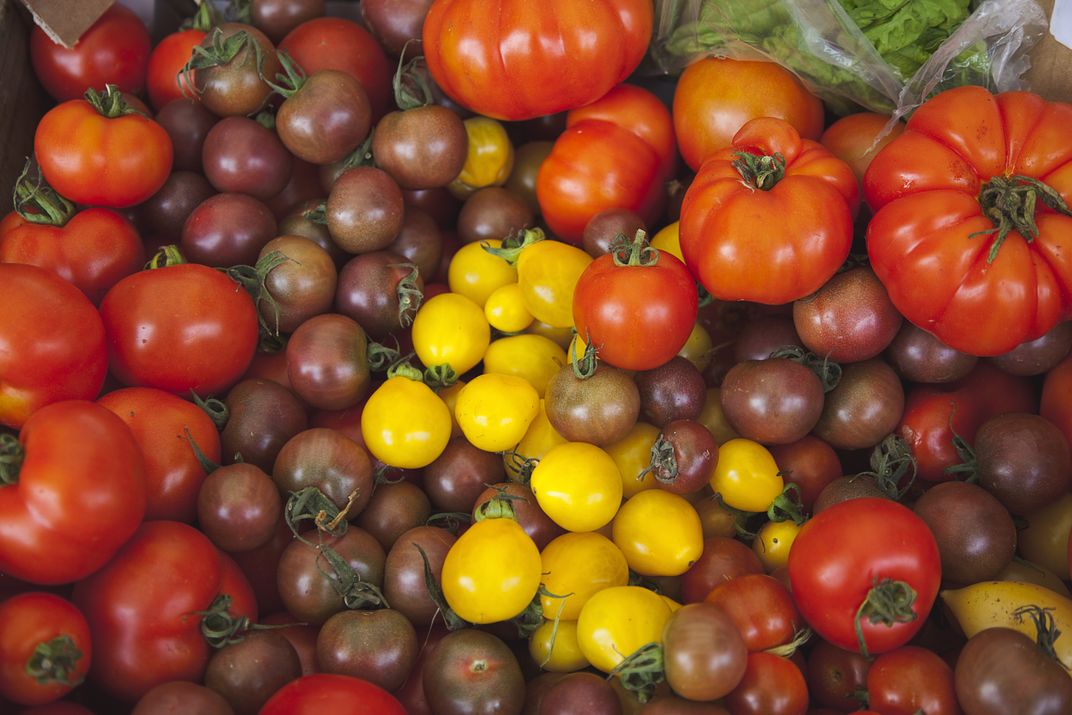
When choosing tomatoes, look for bruising, spotting or soft spots on the skin. If there are signs of any of these, do not buy them. Look for vibrant colors among the rainbowed assortment of tomatoes at the market. Touch is also a big indicator of a good tomato. The tomato should feel firm but still reacts to touch. Lastly, make sure the tomato smells like a tomato. If it smells funky or just not like a tomato it may be a sign that the tomato going bad.
When storing tomatoes, do not put them in the refrigerator. The refrigerator will turn that deliciously, juicy, farm fresh tomato into a meaty, tasteless, winter tomato. Refrigerating tomatoes damages the membranes in the fruit, which causes the tomatoes to lose flavor. If the refrigerator is the only option, let the tomato sit out a day before using.
Summer Squash
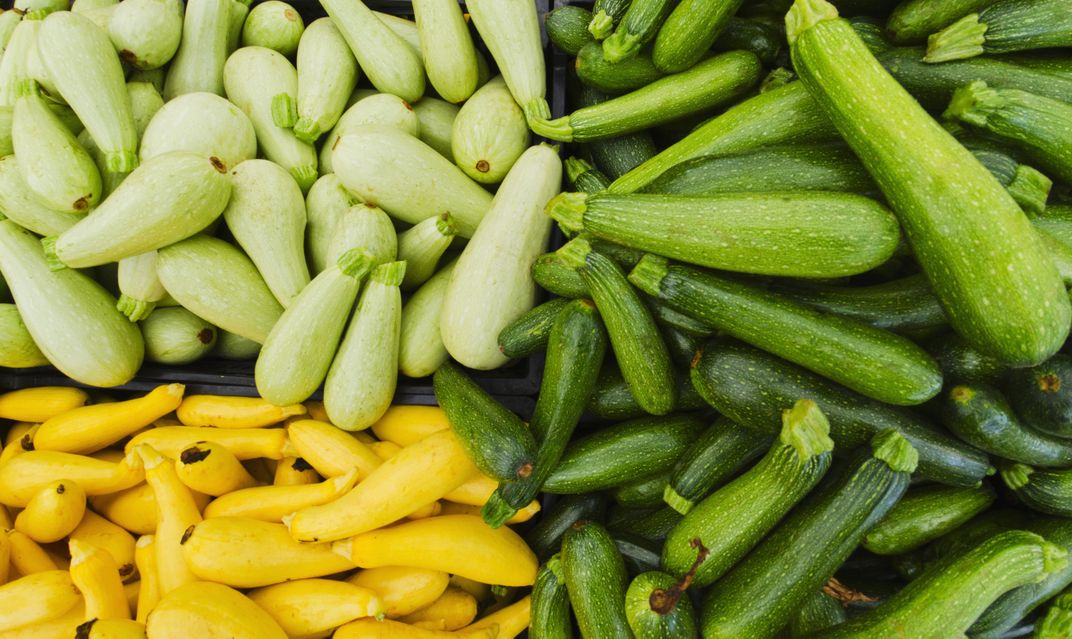
Summer squash includes the more known zucchini and yellow squash but also yellow zucchini, green tiger zucchini, pattypan squash and more. Summer squash is moister than winter squash and therefore has a shorter lifespan. Summer squash varieties are delicate and thin skinned, so it is important to look for bruising and blemishes before buying. Also, choose firm squash as they will quickly soften. The smaller squash tend to be sweeter and preferable when cooking.
When storing summer squash, place in a plastic bag with as much air removed as possible, then tightly wrap the bag around the squash before storing in the vegetable drawer of the refrigerator.
Herbs
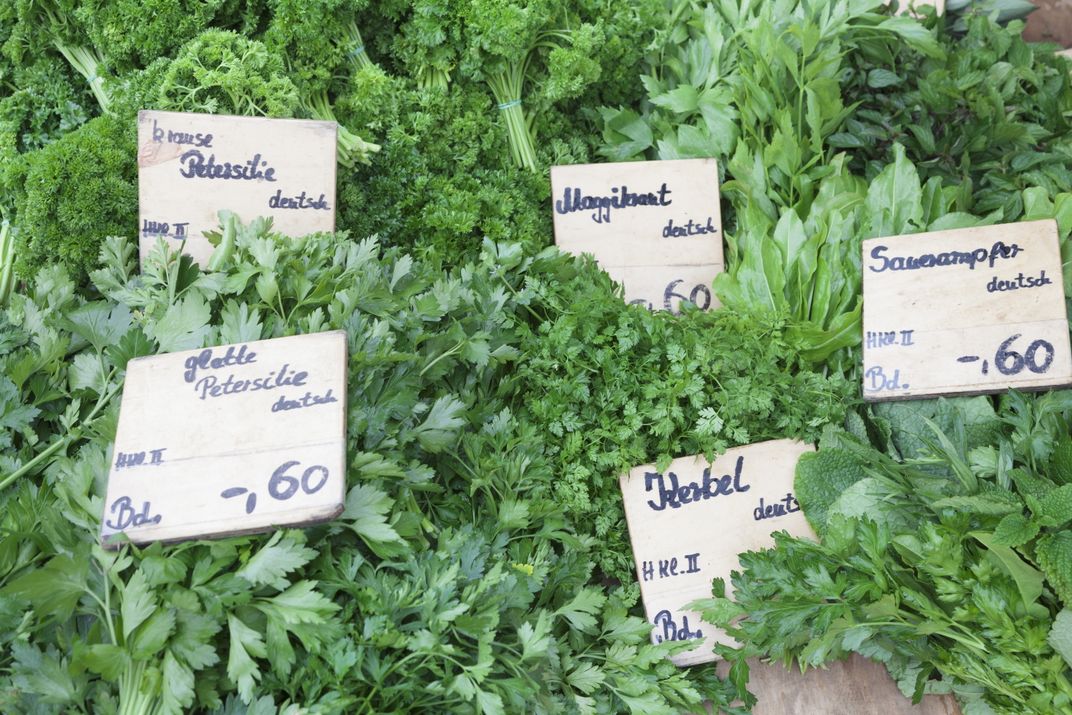
Summertime is also herb season. And, there is nothing better and more flavorful than fresh-picked herbs at the farmers market. Basil, dill, cilantro, sage and thyme are just a few of the herbs that hit the stands during this season. But, preserving herbs to use throughout the week can be a challenge. Make sure the herbs are not wilted in any way before choosing.
Once home, treat herbs like flowers. Cut off the ends and put them in a glass of water immediately. Then put the glass of herbs in the refrigerator, except for basil. Leave the glass of basil on the counter in the kitchen away from direct sunlight. The refrigerator will spoil the flavor of basil and cause it to turn black.
Eggplant
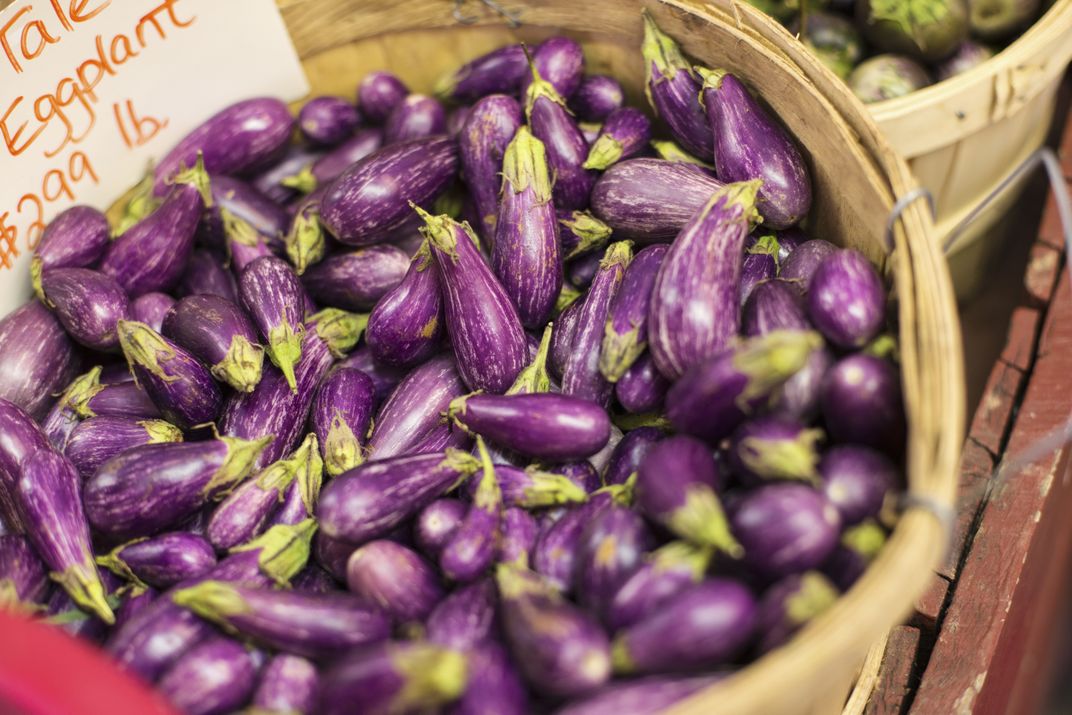
Eggplant is a great example of a vegetable at the farmers market that may look a little different than what is commonly seen in the grocery store. The main differentiators being color and size. What is commonly found at the grocery store is large, black beauty eggplant. Though at the farmers market, you may come across, Chinese, Japanese, Thai, white, graffiti, Sicilian and if lucky, Fairy Tale eggplant.
When buying eggplant, make sure it is firm and doesn’t have any bruises. The riper and softer it is, the most likely it will taste bitter. Also, look at the calyx and stem, the greener the better. Avoid eggplants that have brown leaves.
Store eggplant in the refrigerator in the vegetable drawer. Be sure to use within a few days, as the longer the eggplant sits the more bitter it will get.
Melon
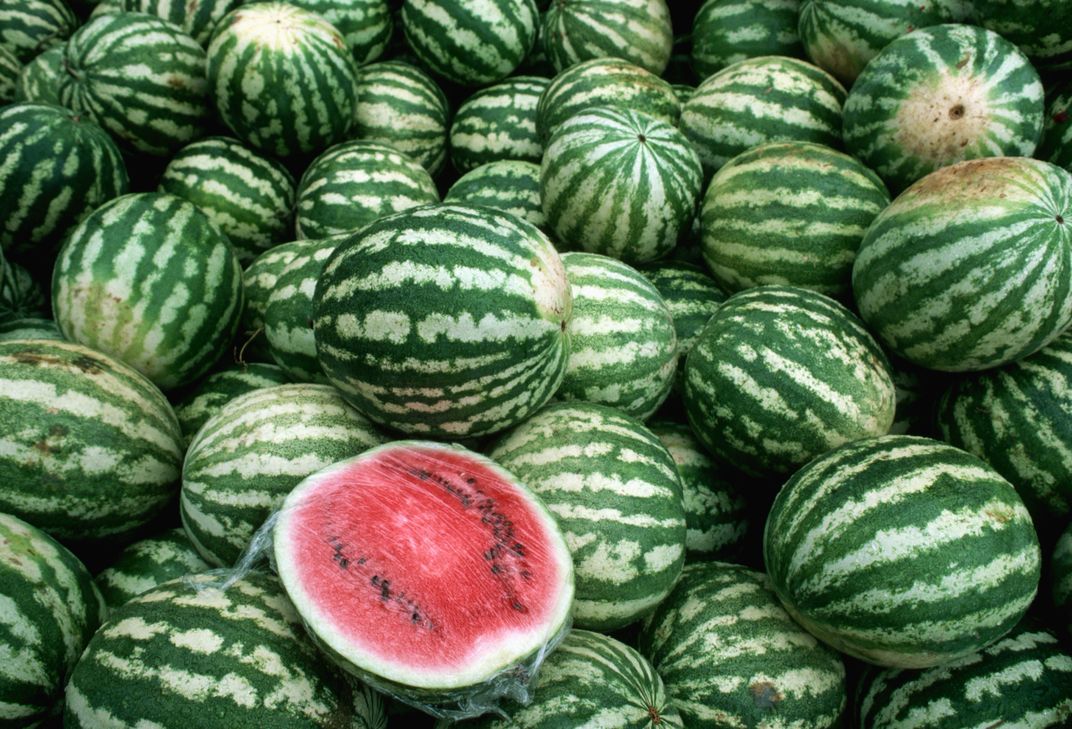
Picking out melons can seem like a difficult task compared to other fruits and vegetables that are easily felt for ripeness and defects. Melons bring a whole new challenge with their large size and thick skin. They also do not continue to ripen once picked, so it is important to find one that is already ripe for that sweet flavor. When looking for a good melon, first look for bruising, soft spots or cracks.
Color, which of course varies by melon, is important. For cantaloupes or muskmelons make sure the color is more of a golden color than green. For honeydew, a light yellow color is idea, and for watermelon, look for a yellow spot, which is developed when the melon rests on the ground after picking. A yellow spot is a easy sign for ripeness. Cantaloupe and honeydew varieties can also be smelled for ripeness.
Store ripe melons in the refrigerator. Only cut melon before eating. But if the melon is cut, it should be wrapped tightly with plastic wrap and stored in the refrigerator immediately.
Corn
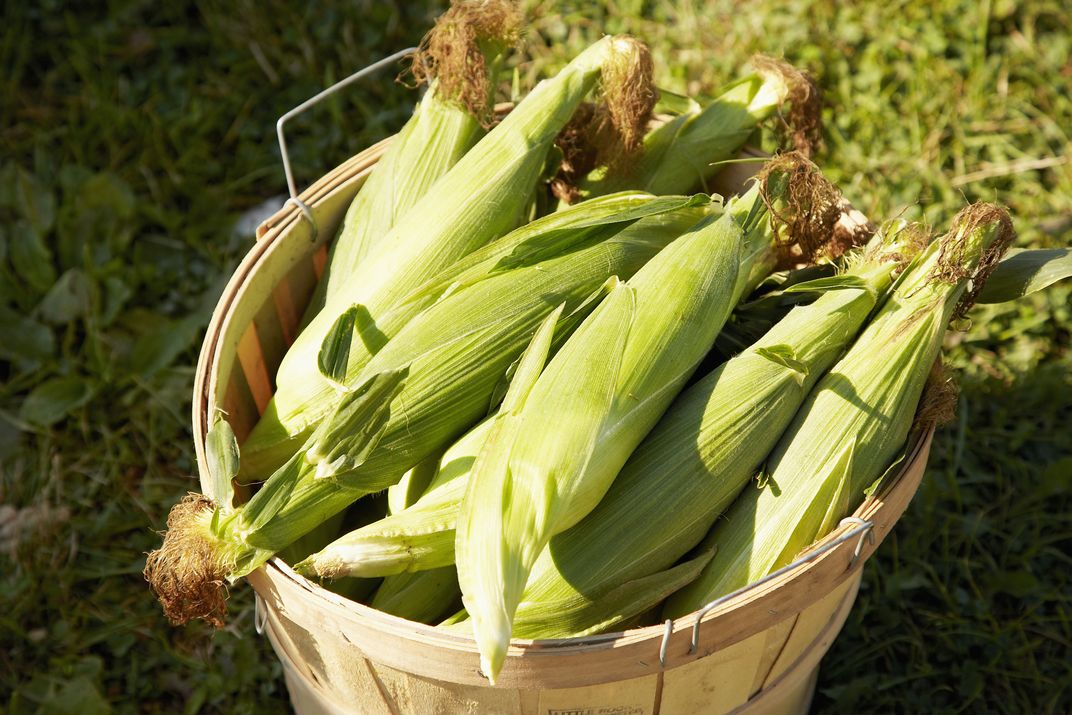
It is not uncommon to see people shucking corn right there at the farmers market or grocery store. But, there is actually etiquette to buying corn and that means not opening the husks before buying. When corn is picked, the sugar immediately starts converting to starch. And when the husk is opened, it hastens this process, affecting the flavor of the corn. So as tempting as it is to take a little look at the corn, it's a counter-productive step that will also produce a few angry stares from the farmers. Instead, look for bright green, tightly wrapped and almost moist husks. Then investigate the husks for small brown wormholes. If all is clear, then feel the individual kernels through the husks. Make sure there are no missing kernels. The tassels should also be brown and almost sticky to the touch.
Corn is best eaten on the day that it is bought. But to store for a few days, put it in the refrigerator immediately with the husks still on. The cool temperature of the refrigerator will slow down the sugar to starch process. If the corn is already husked for some reason, then put the ears in a plastic bag before storing in the refrigerator.
/https://tf-cmsv2-smithsonianmag-media.s3.amazonaws.com/accounts/headshot/shaylyn-headshot.jpg)
/https://tf-cmsv2-smithsonianmag-media.s3.amazonaws.com/accounts/headshot/shaylyn-headshot.jpg)